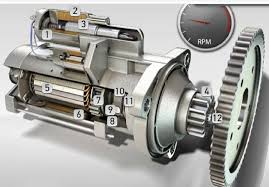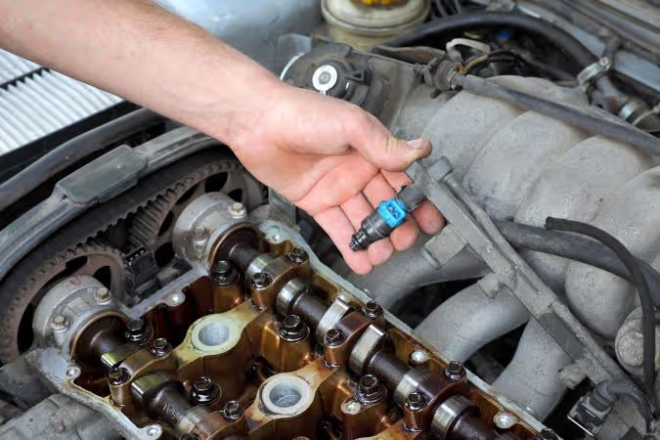Introduction: A Key Component Driving Industrial Performance
In electric motors used across industrial systems, the stator core plays a crucial role in determining performance, efficiency, and reliability. Though it remains stationary, the stator core is central to generating a rotating magnetic field, which is essential to motor function.
In today’s manufacturing, automation, and energy-driven environments, the stator core is more than a standard component — it is a strategic element in achieving optimal results.
Understanding the Stator Core and Its Function
A stator core consists of laminated electrical steel sheets designed to minimize energy loss and magnetic hysteresis. It is an integral part of the motor’s stator assembly and enables the transformation of electrical energy into mechanical motion through magnetic induction.
In industrial contexts, the quality of the stator core directly impacts:
Motor efficiency
Heat generation and dissipation
Power-to-weight ratio
Operational reliability
Maintenance frequency and cost
The better the stator core, the more efficient the system.

Industrial Applications of the Stator Core
The stator core is widely used across multiple industrial segments, including:
Heavy Machinery
Machinery for manufacturing, mining, and material handling requires high-torque, continuous-operation motors. Stator cores designed for endurance and thermal stability are critical for such applications.
Electric Mobility
Electric vehicle motors rely on compact, high-efficiency stator cores to increase range and reduce weight. These cores support lightweight design and efficient power delivery.
HVAC Systems
In HVAC units, energy-optimized stator cores improve motor performance while lowering power consumption, aligning with energy-saving standards.
Automation Equipment
CNC machines, robotics, and conveyor systems require consistent torque and low-vibration performance, which directly depend on the quality and precision of the stator core.
Modern Advantages of the Stator Core
Recent advancements in materials and design have significantly improved the performance of the stator core. Key advantages include:
High-Efficiency Lamination Materials
The use of advanced silicon steel laminations reduces eddy current losses, increasing overall motor efficiency and thermal control.
Precision Manufacturing
Laser-cut and bonded cores reduce noise, improve magnetic flux, and ensure uniformity — all critical in demanding industrial applications.
Design Customization
Application-specific design of the stator core improves performance. Custom slot shapes, dimensions, and coating technologies contribute to higher motor torque and lower energy use.
Enhanced Thermal Stability
Modern stator cores are engineered for better airflow and lower thermal rise, resulting in longer motor life and consistent performance under continuous operation.
Regulatory Compliance
New designs support energy-efficiency certifications (such as IE3, IE4, and IE5 motor standards) and comply with international regulations for materials and performance.
Future Prospects for the Stator Core in Industrial Applications
The outlook for stator core demand and innovation is strong, driven by several trends:
Electrification of Industry
As electric motors replace combustion engines in many sectors, the role of the stator core will only grow in relevance. Lightweight, energy-efficient cores will become a core focus for manufacturers.
Smart Manufacturing
With the rise of Industry 4.0, motors with embedded diagnostics and sensors will depend on high-precision stator cores to maintain performance and reduce energy usage.
Sustainability Demands
Environmentally conscious engineering requires high-efficiency components. The stator core directly supports corporate sustainability goals by lowering system power consumption and reducing CO₂ emissions.
Why the Industrial Sector Should Prioritize the Stator Core
For industrial buyers and engineers, choosing a well-designed stator core delivers direct operational and strategic benefits:
Reduces power consumption per motor
Lowers heat-related wear and extends system lifespan
Decreases maintenance frequency and costs
Supports regulatory compliance and environmental goals
Enhances overall system output and reliability
Ignoring core quality can lead to inefficiency, increased operational costs, and failure to meet new energy standards.
Conclusion: An Essential Investment for Industrial Efficiency
The stator core is no longer just a supporting component — it’s a performance-critical part of every modern industrial motor. Its design, material quality, and manufacturing precision impact everything from energy consumption to system reliability.
For procurement managers, engineers, and product developers, focusing on the quality and design of the stator core is not a technical detail — it’s a strategic decision.
A high-performance stator core represents:
Better motor output
Stronger sustainability performance
Long-term return on investment
Compatibility with future-ready motor designs
Industrial progress begins at the core — and the stator core is where real performance starts.





